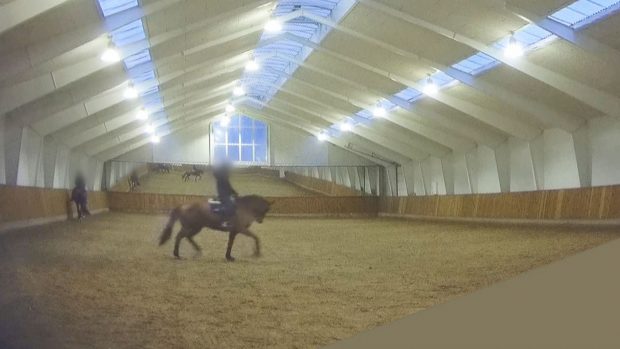The practice of rollkür — riding the horse overbent from the wither along the poll — is not inherently abusive to horses, according to research presented at a veterinary and welfare workshop in Lausanne, Switzerland yesterday.
“There is an absence of factual evidence [that rollkür causes harm]. I have not recognised any injury related to this technique,” said Dr Sue Dyson FRCVS, a world expert in equine orthopaedics at the UK’s Animal Health Trust.
But rollkür can be harmful if it is adopted by unskilled riders or used in a coercive manner, acknowledged experts giving evidence at the International Equestrian Federation’s (FEI) workshop.
The meeting was called by Mariette Withages, chair of the dressage committee, to address public and press concerns.
Dr Eric van Breda of Maastricht University in the Netherlands said: “There is a fine line between training and overtraining. Rollkür does not induce stress or pose a threat, but it may do so in unskilled hands.”
Following the workshop, the FEI is to develop a detailed definition of what can be considered abuse. It will also further educate stewards to identify possible abuse within dressage and other sports including show jumping and eventing — where rollkür is widely used.
“Measures should be taken not against rollkür, but to protect horses from a violent way of riding and lack of lightness,” said Prof Frank Odberg, an animal behaviourist at Ghent University.
As the workshop unfolded, one scientist after another — experts in radiology, anatomy and orthopaedics — presented research to suggest the horse’s welfare is not compromised by this training technique. Psychological and stress studies vindicated the practice, too.
One of the 11 speakers, Sjef Janssen (right), husband and trainer of double Olympic gold medallist Anky van Grunsven, presented his training system that features a method that’s “low, deep and round”. Mr Janssen does not accept this as “rollkür”, a word he says has negative implications.
“Long, deep and round helps in the whole-body training of the elite athlete within a high-performance environment,” Mr Janssen told the workshop. “But I accept there is a danger that it can be copied by unskilled trainers and riders.
“I must stress [my system] is not a blueprint for all horses. But my proof is a happy athlete — Sydney Olympic gold medallist Bonfire, fit and enjoying life at the age of 23.”
But Dr Andrew Higgins, welfare sub-committee chair, reminded the workshop that deep riding or rollkür offends some people.
“It is a perceived welfare issue that the public may not continue to tolerate,” Dr Higgins warned at the start of the workshop.
The vets, scientists and equestrians agreed more scientific research is needed to further establish whether rollkür may pose a threat to a horse’s physical or psychological well-being.
The delegates also suggested the term “hyperflexion of the neck” be substituted for the term “rollkür” because the language is more neutral.
Mariette Withages said: “We are not blind, we are not deaf. We care and worry about the horses.”
The FEI dressage, veterinary and welfare sub-committees will submit a report to the FEI and recommend further scientific research in the next few weeks.


